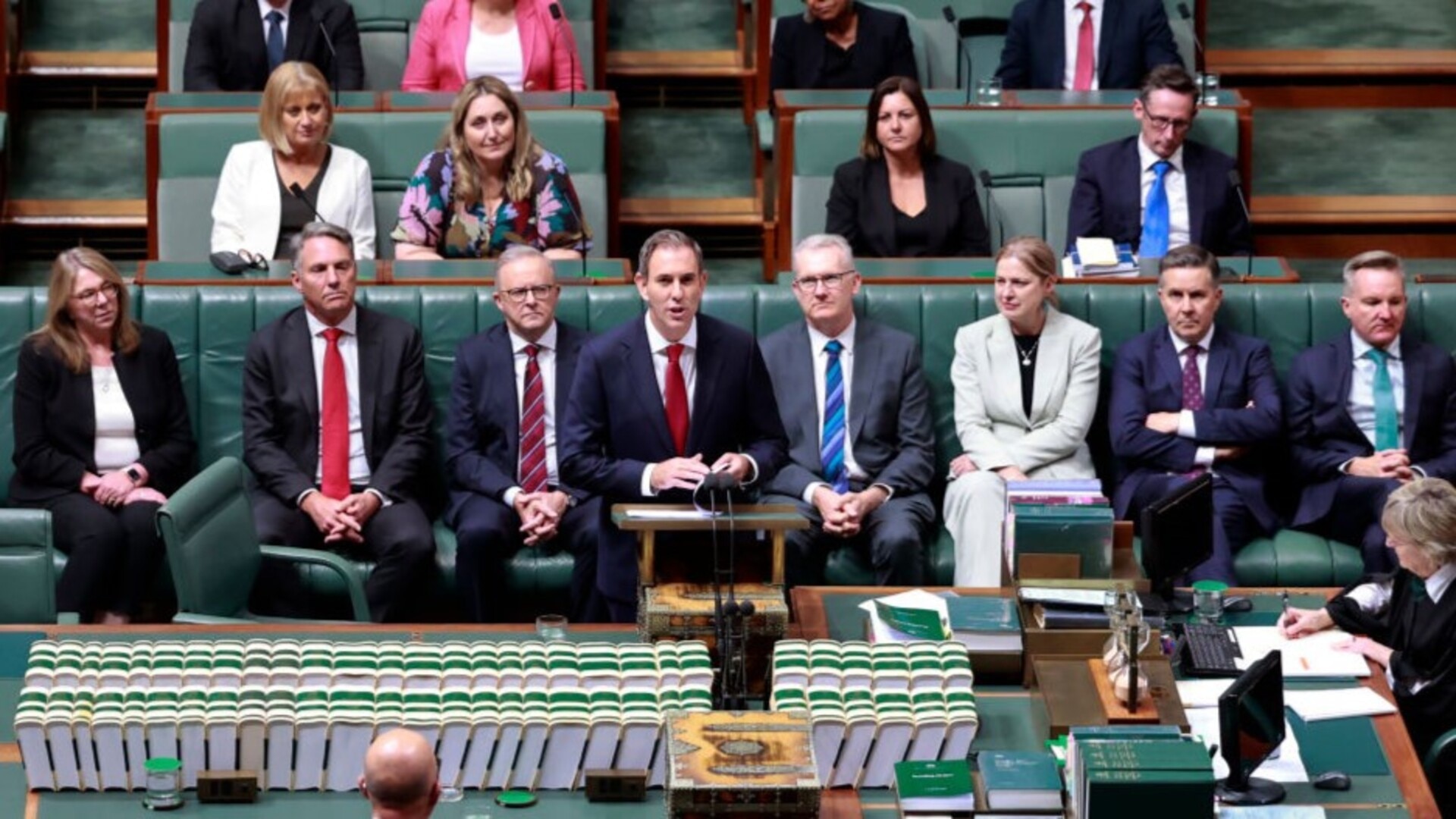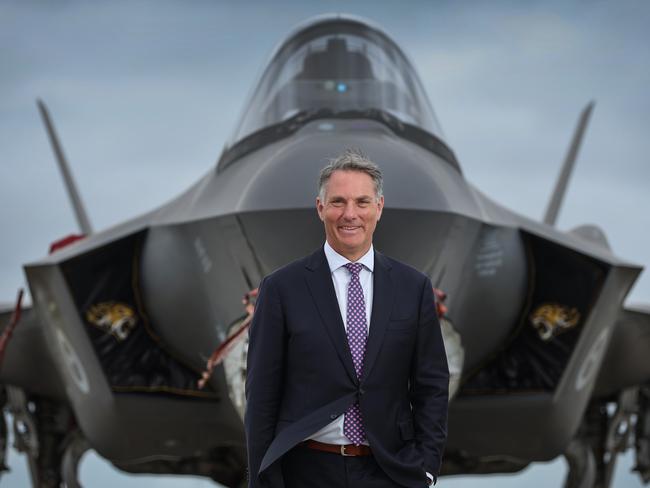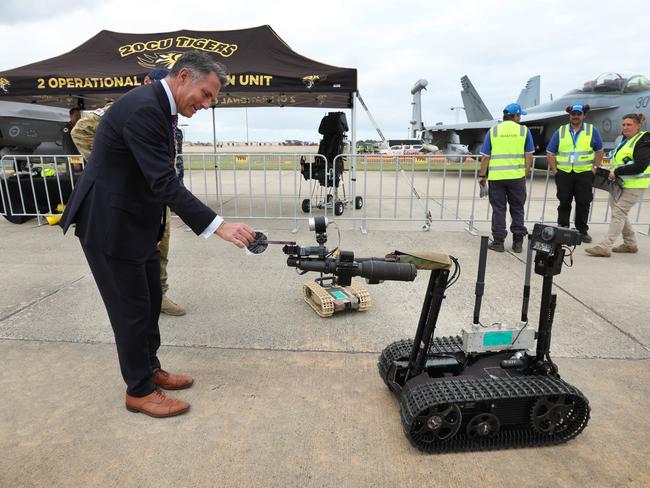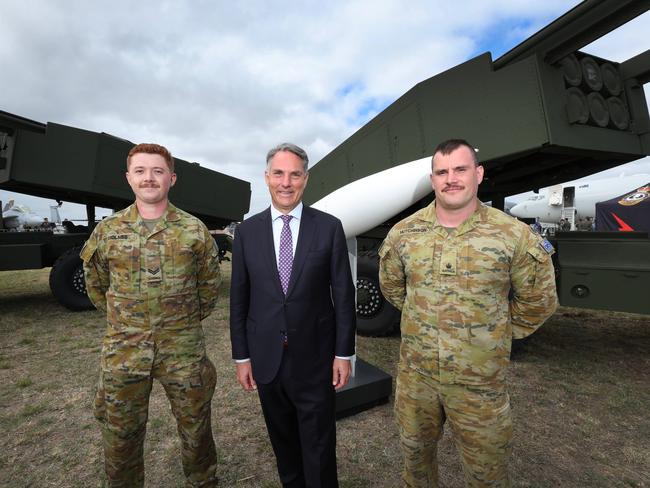‘Cyber is front and centre’: Richard Marles warns Australia continues to deal with threats from Russia, China
Australia’s military spending is at ‘record highs’ as the nation deals with threats from Russian and Chinese-based attackers in a different kind of warfare.

National
Don't miss out on the headlines from National. Followed categories will be added to My News.
Cyber attacks are the new frontline for Australia’s defence as Russian and Chinese-based hackers threaten crippling keyboard attacks on power stations, phone towers and traffic light systems.
Deputy Prime Minister Richard Marles has warned that our defence forces were battling in a “grey zone”, saying that the “binary idea of war and peace” no longer applied.
“Cyber today really matters. In terms of what we are trying to build with the Defence Force, cyber is front and centre in that,” he said.
“We are in a world of strategic contest. We’re certainly not in a war in that sense but there is contest going on and the grey zone is much bigger, and when you drill into that a lot of that is cyber.”

Speaking after delivering a Budget this week where defence spending was 2.1 per cent of GDP – well short of US demands to hit 3 per cent of GDP – Mr Marles said Australia’s military spending was at “record highs” with $56.6bn allocated this year.
The United States and Australia remain committed to the $368bn AUKUS nuclear-powered submarine deal, which would allow our Navy to patrol for longer distances in international waters to deter the Chinese Navy.
That spend remains a priority, but the threat from cyber attacks remains imminent.
Russian hackers were behind the Medibank hack last year, intelligence supplied by the Australian Signals Directorate (ASD) found.
The secretive ASD, which has its roots in Britain’s GCHQ which broke Germany’s Enigma code that helped end World War II, has become an increasingly key part of Australia’s defence armoury.
Mr Marles, who is also the Defence Minister, announced sanctions in February against Russian company ZServers and five of its employees.
He said the ASD was doubling in size as part of the REDSPICE program in response to the threat from foreign governments and criminal organisations.
The supercharging of the ASD will allow it to strike back, tripling its own offensive cyber capability through the hiring of 1900 additional analysts and leveraging artificial intelligence.
China has been flexing its muscles off Australian shores, with the People’s Liberation Army Navy conducting military exercises in international waters in the Tasman sea in February.
The Chinese Navy exercise was first reported by a Virgin Airlines pilot who picked up their radio chatter, with the firing of live rounds forcing commercial airlines to divert their flight paths.


Mr Marles inspected a F-35A fighter jet this week at the Avalon Air Show, saying the new generation fighter was “completely different to what we were watching when Top Gun was the movie.”
“When you see how the F-35 operates there are a whole lot of features on it that are amazing, stealth features – how far it can see and how far it cannot be seen. A huge part of this is the raw computing power on it and that all exists in a cyber context,” he said.
The Albanese Government last year mothballed plans to buy a fourth squadron of F-35A jets, sticking with the 72 already on order.
Opposition leader Peter Dutton earlier this month pledged to spend $3bn pushing ahead with another 28 aircraft, which would bring the fleet to 100.
However, Mr Marles hit back at those plans saying Mr Dutton had no plan on how to crew and maintain the extra jets.
“An F-35 sitting on the ground without a pilot in it doesn’t do anything,” he said.
stephen.drill@news.com.au
More Coverage
Originally published as ‘Cyber is front and centre’: Richard Marles warns Australia continues to deal with threats from Russia, China





